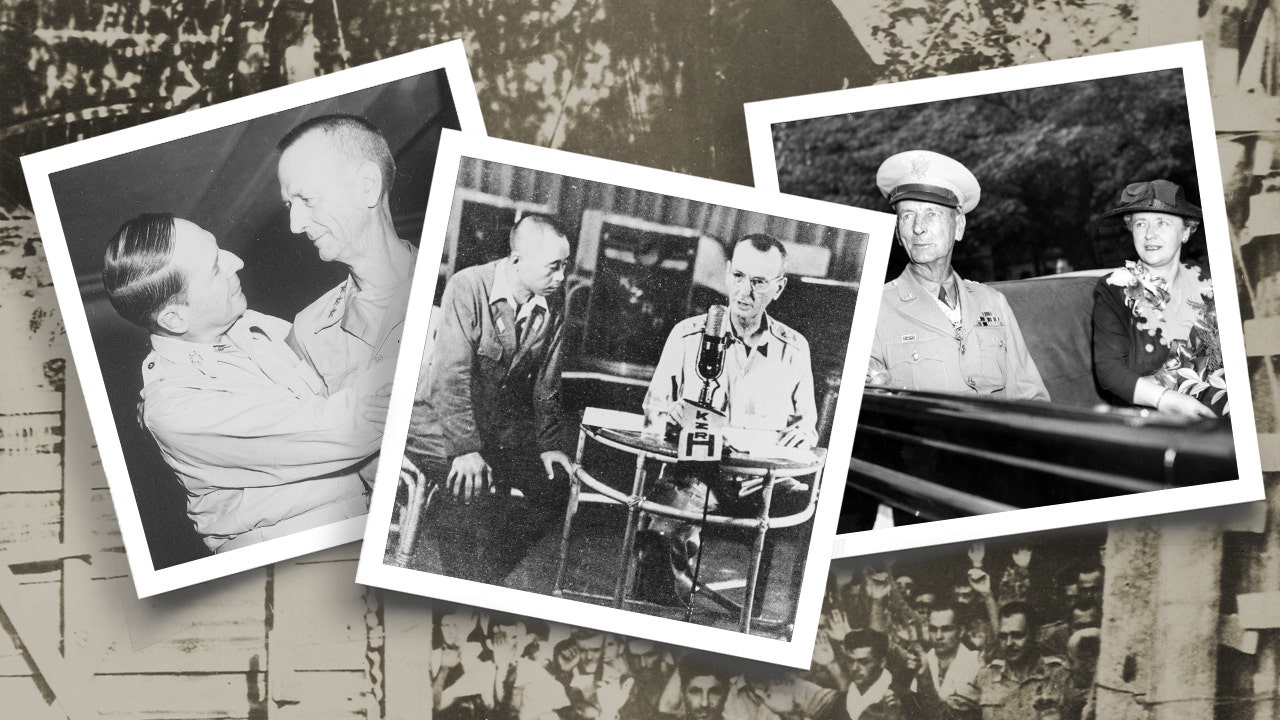With the United States observing National Former Prisoner of War Recognition Day on April 9, Fox News anchor and former White House press secretary Dana Perino interviewed former White House speechwriter and historian Jonathan Horn about his newest book, “The Fate of the Generals.” The book tells the true story of Gen. Jonathan Wainwright, the highest-ranking American POW of World War II.
–
Dana Perino: Who was Gen. Jonathan Wainwright?
Jonathan Horn: Gen. Wainwright was a gritty cavalryman who grew up in Montana not far from the Little Bighorn battlefield — the site of one of history’s most famous last stands — but who could not have known that he would one day have to make a last stand of his own. It happened in the Philippines (then an American colony) during the early days of World War II, when the Japanese invaded the islands after attacking Pearl Harbor.
US ARMY VETERAN STARTS SUCCESSFUL BARBECUE BUSINESS DESPITE HEALTH CHALLENGES: ‘VERY PROUD’
Wainwright became the top United States commander in the Philippines after his superior Douglas MacArthur received orders to flee the islands, even as his troops there fought on against impossible odds. While MacArthur vowed to return to the islands, Wainwright took a very different oath: to stay there and share the fate of his men, even if it meant surrendering with them and becoming the highest-ranking American prisoner of the Japanese.
Perino: Why does the United States observe National Former Prisoner of War Recognition Day on April 9?
Horn: It’s the anniversary of the largest surrender of United States forces in history. When the Japanese landed in the Philippines in December 1941, American and Filipino troops fell back into the jungles of the Bataan peninsula, where they fought on without sufficient food or medicine until their bodies could fight on no longer. That sad day came on April 9, 1942.
Nearly 80,000 men lay down their arms. Those who survived the terrors of the Bataan Death March would find new horrors as prisoners of the Japanese. Wainwright would carry on the struggle for another month on a small island called Corregidor, a few miles off the tip of Bataan. He finally agreed to surrender himself and the rest of the Philippines only because he feared the Japanese would otherwise carry out a massacre.

Perino: What happened to Wainwright during his time as a prisoner of the Japanese?
Horn: Wainwright remained a prisoner for the rest of the war. The Japanese subjected him to what he called “systematic starvation” and beatings as they moved him from the Philippines to camps in Taiwan and eventually all the way to Manchuria.
GRANDSON OF FORMER COMMANDANT OF AUSCHWITZ ON RISE OF ANTISEMITISM, HIS LIFE AS A PASTOR
Perhaps the cruelest torture was isolation from the outside world. Receiving no letters for long periods and cut off from the news, Wainwright worried that the American people would never forgive him for the decision he had made to surrender for the sake of his men.
Perino: When Wainwright returned to America after the war, he received a hero’s welcome and the Medal of Honor. Why do you think so many Americans today are unfamiliar with his name?
Horn: The story of MacArthur’s vow to return to the Philippines has overshadowed the story of Wainwright’s vow to stay with his men there. More than four decades have passed since a biography about Wainwright last came out.
During that time, boxes of Wainwright’s personal papers, including his diaries and letters, have become available for research in military archives. As a result, it’s possible to tell his story now in a way never before possible and to restore him to his proper place in history.
Perino: What lesson do you hope Americans today will draw from Wainwright’s story?
Horn: I hope Americans today will remember the lesson Wainwright himself drew from his terrible ordeal: the need for military preparedness. I also hope they will never forget the courage he and his fellow prisoners of war showed and the sacrifice they made for our country.
“The Fate of the Generals: MacArthur, Wainwright, and the Epic Battle for the Philippines” will be published by Scribner on April 15.
Read the full article here


